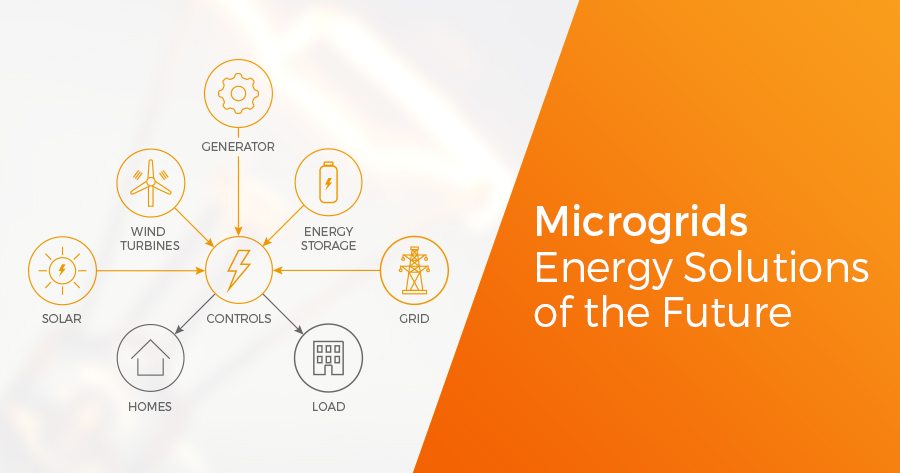Microgrids – Energy Solutions of the Future

What are Microgrids?
Just like the name suggests, microgrids are micro versions of traditional grids.
In a microgrid setup, the electricity needs of the community are supplied by local, often renewable-based generation.
How do Microgrids Work?
To understand why more and more people are looking at making the switch to microgrids, it’s helpful to look at the setup and shortcomings of the traditional grid.
In a traditional grid setup, homes and businesses are connected to a central power source. While a traditional grid provides all users with an uninterrupted electricity supply, this same interconnectedness means that when part of the grid needs to be repaired or goes down, all users are affected.
In contrast, thanks to their control capabilities, microgrids can disconnect from the traditional grid and operate autonomously if required.
This allows homeowners and/or business owners who are connected to the microgrid to continue to use electricity, even if the traditional grid has shut down due to crises like storms and power outages.
Microgrids can be powered by generators, batteries, and/or renewable resources like solar panels or wind turbines.
How Do Microgrids Connect to the Main Grid?
While it’s possible to separate from the main grid entirely, a microgrid usually connects to the grid at a point of common coupling.
This point will make sure the microgrid maintains the same voltage as the main grid. If there is a problem on the main grid, the microgrid will disconnect and function as an island. This enables all buildings who are connected to the microgrid to continue using power.
Benefits of Microgrids
Backup power in case of emergencies
As previously mentioned, microgrids can disconnect from the traditional grid and operate autonomously if required to do so.
This allows users who are connected to the microgrid to continue to use electricity, even if the traditional grid has shut down.
Reduced network costs
In a traditional grid setup, network costs are required to cover the keeping of lines, poles and other grid technologies maintained and working to full capacity.
Whereas in a microgrid setup the source of electricity is much closer, meaning network and therefore electricity costs are much less.
Allows a community to become more energy independent
By creating and consuming their own energy and becoming less reliant on the traditional grid and electricity retailers, microgrids cut costs and give communities more energy independence.
Increased environmental sustainability
When utilising renewable-based generation like solar energy or wind power, microgrids can increase a community’s environmental sustainability
How many homes/businesses can a microgrid power?
Depending on the specific needs of those using the electricity, microgrids come in a variety of designs and sizes.
Infinite Energy is equipped to design and install microgrids that can power communities made up of hundreds of homes, to microgrids designed to power a single business.
For more information on microgrids and how you can access their benefits, contact Infinite Energy today.


